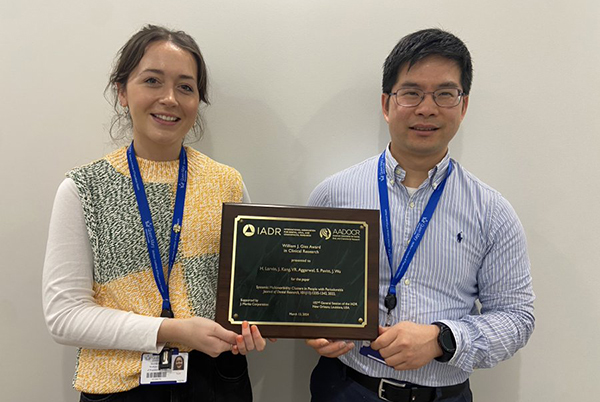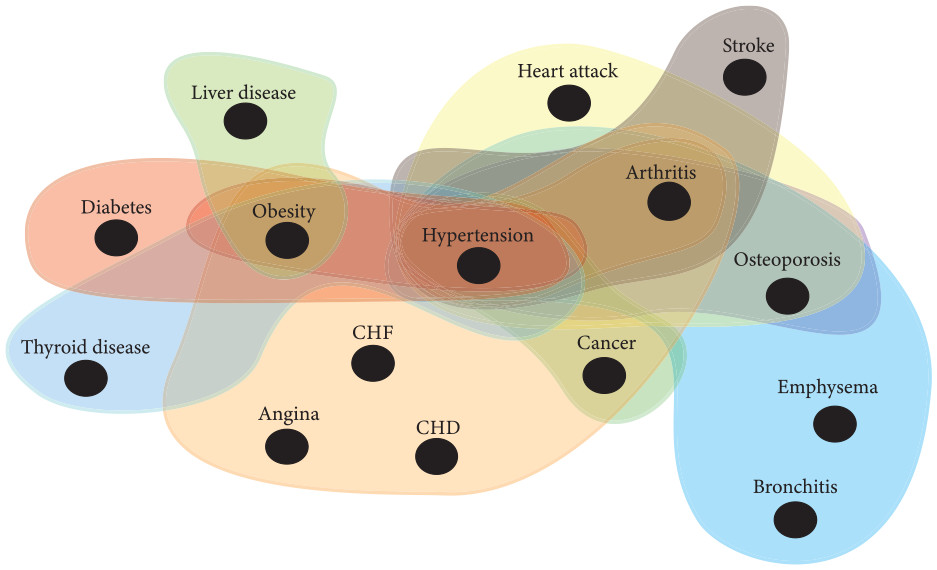AI-enabled research into patterns of multimorbidity in people with gum disease wins prestigious William J. Gies Award for best paper
CEG’s Dr Harriet Larvin and Professor Jianhua Wu have won the William J. Gies Award, given for the best paper published in the Journal of Dental Research during the preceding year. The award is presented by the International Association for Dental, Oral, and Craniofacial Research (IADR) and American Association for Dental, Oral, and Craniofacial Research (AADOCR).

Dr Harriet Larvin and Professor Jianhua Wu with the award.
Dr Larvin, Professor Wu, and colleagues at the University of Leeds, analysed health data for 3,700 patients with gum disease. They found that particular groups of co-existing conditions (known as clusters of multimorbidity) are common in people with gum disease. The conditions include high blood pressure, obesity and diabetes, which are systemic - affecting the whole body - rather than being solely oral health concerns. The team used ‘hypergraphs’, a type of artificial intelligence network analysis, to reveal the typical disease clusters, and to identify which of the conditions in each cluster may be most influential.
The analysis found that people with gum disease are more likely to present with high blood pressure and obesity together, and these conditions are highly influential to the presence of other diseases in the body. Diabetes was most influential for people with more severe gum disease. The authors also studied the impact of social inequalities and lifestyle factors, finding that ethnicity and deprivation affected the clustering of arthritis and obesity more in people with mild gum disease, while smoking status and deprivation affected the clustering pattern of diabetes and cancer in people with severe gum disease. These findings highlight the value of considering multiple patient factors when designing strategies to prevent and manage diseases.
Hypergraphs and associated techniques enable researchers to study and quantify the relationship between multiple diagnoses at once and identify clustering of conditions within a population. This is the first time the method has been applied to show the associations between oral and systemic disease. As precision medicine moves to the forefront of population health research, the approach could be extremely valuable for defining distinct populations with ill health, understanding how diagnoses interact, and subsequently informing clinical decision-making.

Nodes represent diseases, and hyperedges (shaded areas) represent multimorbidity clusters. CHF = congestive heart failure; CHD = coronary heart disease.
More information
- About the William J. Gies Award
- Research paper: Systemic Multimorbidity Clusters in People with Periodontitis. Harriet Larvin, Jing Kang, Vishal Aggarwal, Sue Pavitt, Jianhua Wu. Journal of Dental Research, 2022.
- For media information, please contact press@qmul.ac.uk